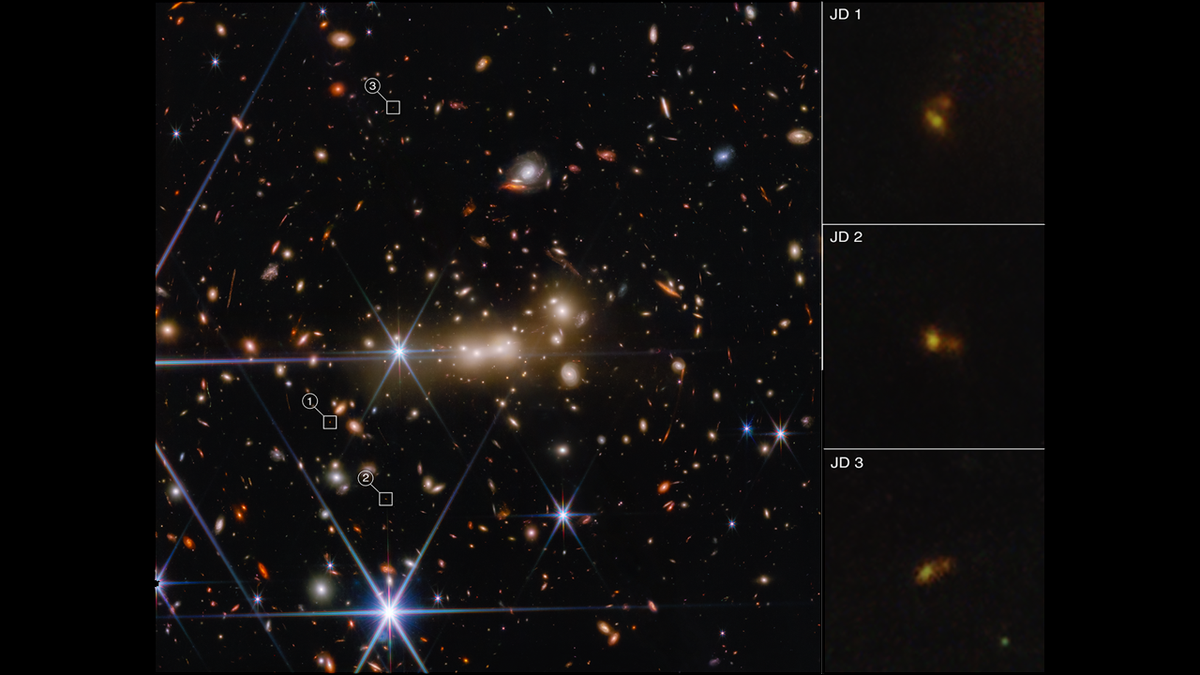New James Webb Space Telescope photos show a massive galaxy cluster bending light
By Elizabeth Howell published about 12 hours ago
Is it two galaxies, or two star clusters? Astronomers aren't yet sure what the James Webb Space Telescope spotted in an image of the early universe.

The massive gravity of galaxy cluster MACS0647 is gravitationally lensing several other systems in this image. (Image credit: SCIENCE: NASA, ESA, CSA, STScI, and Tiger Hsiao (Johns Hopkins University) IMAGE PROCESSING: Alyssa Pagan (STScI))
In a dance of dark matter, NASA's deep-space observatory caught light being bent in the distant universe.
The massive James Webb Space Telescope mirror used a galaxy cluster's gravity to take a look at a known galaxy far behind, but there's a twist: the new research published Wednesday (Oct. 26) suggests Webb may be viewing two galaxies and not one. (The region has been imaged before by the Hubble Space Telescope, but this new view is sharper than ever.)
"We're actively discussing whether these are two galaxies, or two clumps of stars within a galaxy," Space Telescope Science Institute astronomer Dan Coe, an instrument scientist for Webb's near-infrared camera, said in a NASA statement(opens in new tab). "We don't know, but these are the questions that Webb is designed to help us answer."
Hubble saw the objects, found 10 years ago and called MACS0647-JD, as a "pale, red dot" formed just 400 million years after the Big Bang that kickstarted the universe, according to Coe. While Webb revealed that one object was actually two, the nature of what the new telescope is seeing remains a mystery.
More:
https://www.space.com/james-webb-space-telescope-galaxies-bending-light
